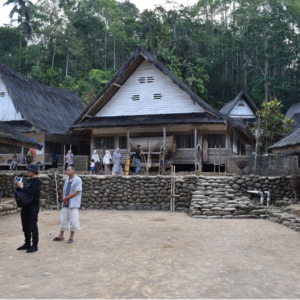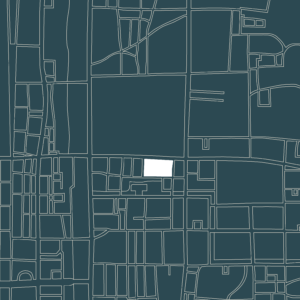
【田路研究室】建築論の探求と建築設計の実践
La disparition du jardin japonais pour la maison ?
Tristan Savigne
When we travel to the heart of Kyoto we are led to discover the Entsu-ji Temple which was once an Imperial villa. The most striking element when visiting it is the construction of the house by the Kyoto landscape. It is nature that organises the interior of the house and not the other way around. Nature is king and man adapts to it. Moreover, these buildings show a nature that is everywhere and in all forms: mountains, trees, rocks, bushes, moss, water. This gives us the impression that we are literally living in the forest simply covered by a roof: the wind, the smells, the insects, the temperature, everything passes from the inside to the outside.
Then, Nicolas Fievé in the book Atlas Historique de Kyoto in his article called “Les Jardins Aristocratiques” reminds us of the importance of the presence of nature in an urbanisation which tends to make it disappear. A possible translation could be “During the ancient period, the creation of gardens was probably the result of a need to replace a wild nature that was no longer present in the urban environment, and there was a subrogation of the values specific to the natural elements that made up the garden: for the Japanese, stones, water, and waterfalls possessed particular energies and magical powers. It was necessary to be in contact with them every day and, therefore, to install them near the houses”. Thus, in this case it seems to be a reinterpretation of perfect nature. The author adds later that in this garden all the seasons should be represented, hence the presence of a maple tree, a plum tree, a cherry tree. Thus, nature is an essential part of the Japanese garden and house, as it could be in France the parvis in front of a church. One does not exist without the other.
However, let us be careful, these works were built by and for wealthy people. What about the ordinary people? I think it is important to look at the current constructions of the population, without which a possible generalization is not possible. The machiya of Kyoto seem to me to be a good example. Indeed, they constituted most of the buildings in the city center 50 years ago according to the Atlas Historique de Kyoto1 produced under the direction of Nicolas Fievé. These city dwellings were atypical for their thin and long plots. In spite of this, Japanese society does not erase the garden and nature that is so important to them, as Koji Yagi states in his book: “the harmony between interior and exterior is preserved, and the garden plays a central role”.
Finally, Kyoto itself is originally built in connection with the geography and its landscape: surrounded by mountains of about four hundred meters, symmetrically located between two mountains Hiei and Atago of nine hundred meters, between two small hills Yoshida and Narabi, and between two rivers Tenjin and Kamo. Its main North-South axis is directly oriented towards the small mountain located in the North: Funaoka. This close link with nature is specific to Japanese belief.
Thus, everything seems to be linked in this short and non-exhaustive summary, to nature. Nevertheless, during my recent cycling trips in and around Kyoto, the new constructions of houses seem to have little or no link with this tradition that forged Japan. Nature is absent, so much so that all the places that could be planted are covered with concrete slabs. There are no gardens and everything seems artificial. These houses are built by construction companies such as Panahome from Panasonic or Sekisui and Mitsuii. A question comes to my mind: has globalisation made the Japanese “lose” this tradition ?

Picture : 663highland, 2010, “ Entsu-ji Kyoto”, View of the landscape from the main room. You can see how thelayout of the house is organised according to the layout of the landscape.

My own picture, Sakyo-ku, Kyoto-shi, June 2022 View of a random contemporary house from a construction company. Here there is no nature, everything seems artifi cial.
【参考文献】
-
FIEVE Nicolas, « Les jardin aristocratiques » Atlas historique de Kyoto : analyse spatiale des systèmes de mémoire d’une ville, de son architecture et de son paysage urbain, UNESCO, 2008, Spain, page 89
-
FIEVE Nicolas, « Kyoto, une ville entre patrimoine architectural et développement urbain » Atlas historique de Kyoto : analyse spatiale des systèmes de mémoire d’une ville, de son architecture et de son paysage urbain, UNESCO, 2008, Spain, page 21
-
YAGI Koji, A japanese touch for you Home, Kodansha International, 1982, Japan, page 19







